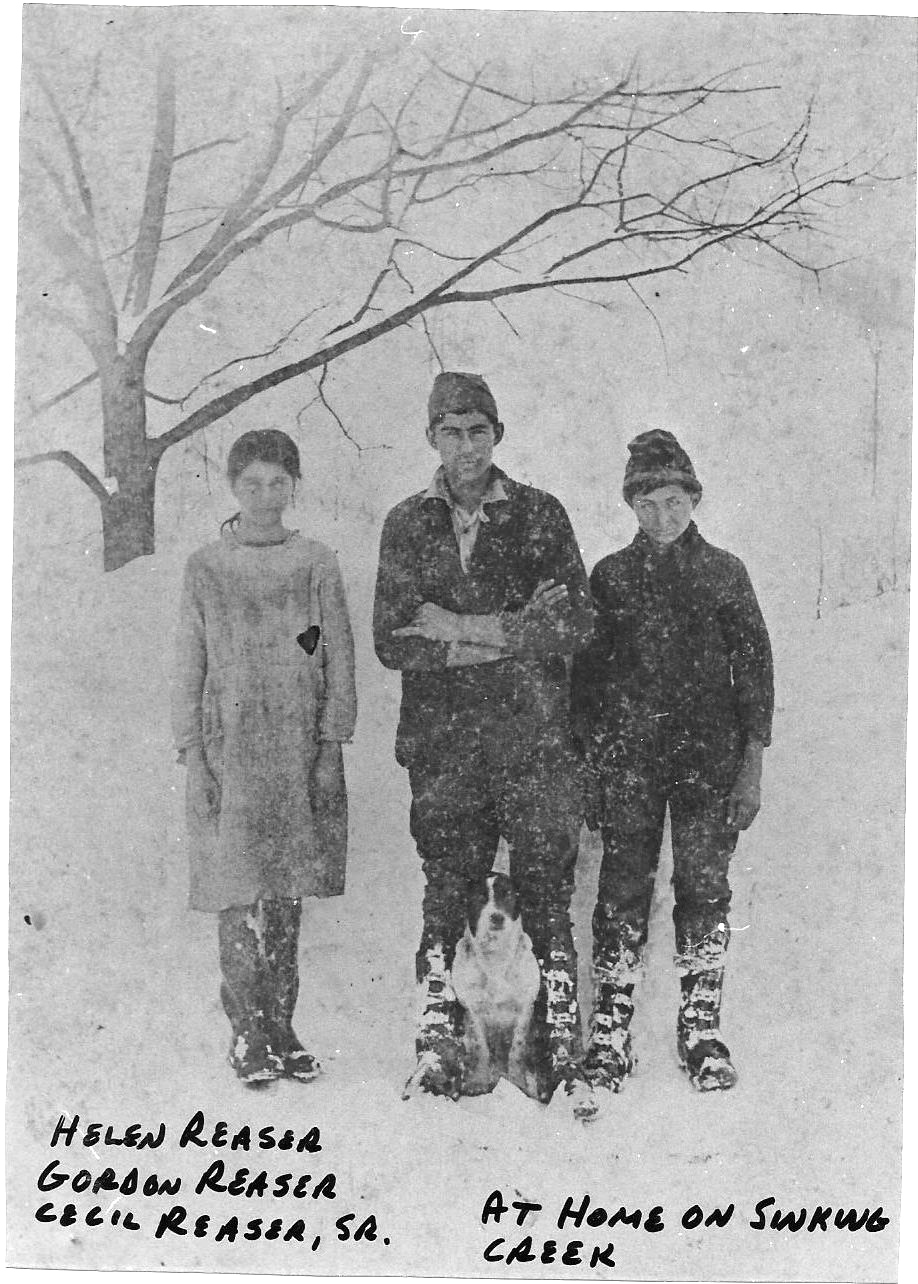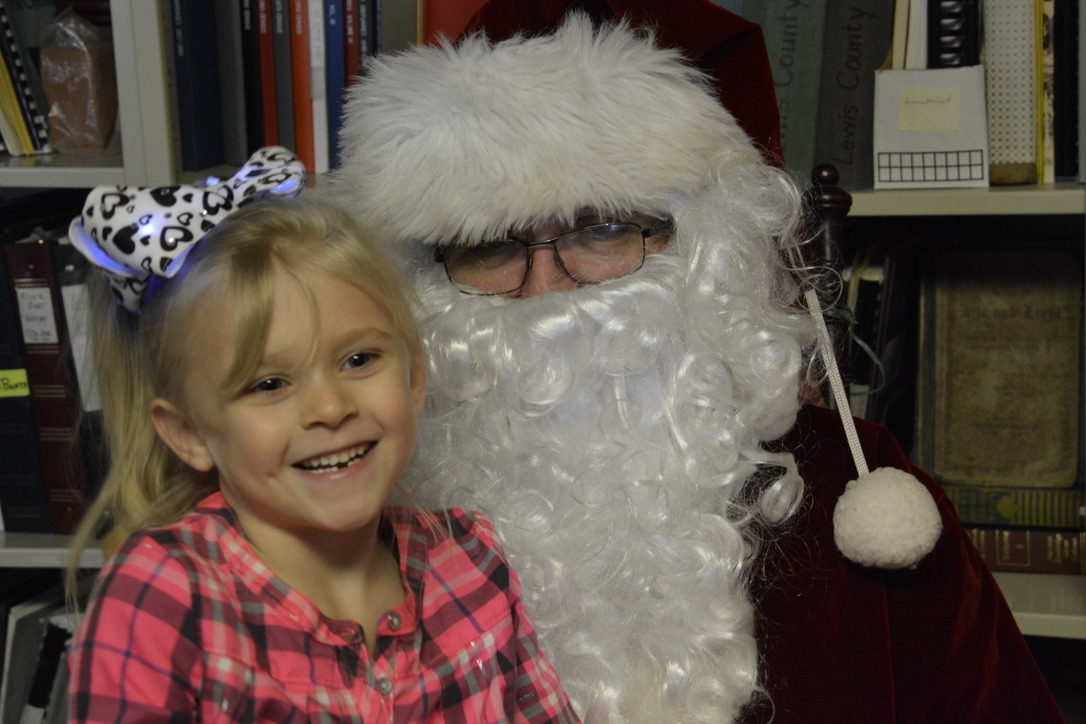HISTORY OF THE COX’S MILLS GRADED SCHOOL
Written in 1935 by Paul Fiddler, Principal
1867 Cox’s Mills derives its name from Oliver Cox, who resided and owned
a mill near the present (1935) Horn Creek bridge.
The first building to be used for a school house in this community was an old
dwelling house located at the present site of Scott Mason’s residence. School
was taught here two years. Lash Snodgrass taught in 1867 and Phillip Cox in
1868. Trustees were: Phillip Cox, David Heckert and Jeffrie.
In the year of 1869, the people became interested in the construction of a log
school building. They discussed the subject, and Oliver P. Cox gave the ground,
one-fourth of an acre, located on Cox’s Camp Fork of Horn Creek, on the south
side of the Parkersburg and Staunton Turnpike or what is known as State Rte. 47.
In a short time, a rude building of the pioneer type was erected. This
building was used until 1901.
The first school established was typical of all early schools as to equipment,
length of term, and subject matter taught.
The teachers and years taught in this building are not complete between
the years of 1869 and 1894, but are listed as nearly as possible. Kingsley Cox;
Edward Lawrence; Perry Mick; Henry Neff; Can Bush; Alice Woofter (Mrs.
Francis Woofter); Charles Oldaker, Jack Keller; D. E. Studer, Perry Cox; Flora
Williams; Emery Snyder; George Cox; Asbury McCloud 1895; Gay Stalnaker
1896; Linnie Brake 1897; Gay Brannon 1898 & 1899; Ivan Bush 1900.
Immediately after the removal of the log building, a one-room frame building
was constructed. It was more modem in structure and equipment, than the one
previously used. The location was the same as that of the log house. This
building was used until 1927 for school and community purposes.
The members of the Board of Education that were responsible for the new
school house were: Benton Springston, J. F. Bailey, and J. V. Langford.
Teachers of the new building were: Ivan Bush 1901; Scipio Lewis 1902; J. W.
Law 1903; Scipio Lewis 1904; Clark Showen 1905; Gertrude Bush 1906; James
Hardman 1907; Artie Ralston 1908 & 1909; Fay Hall (Garrison) 1910; Meade
Wards 1911 & 1912; Brison Boyers 1913; Grace Collins 1914; Columbus
Cutright 1915, 1916, 1917; Willie Debar 1918; Mamie Langford 1919; Brennace
Stase 1920; Earnest King 1921; Willie Debar 1922; Eunace McQuain 1923;
Lenore Powell (Mrs. Boyd Danley) 1924; Opal Bush 1925; Audrey Ellyson (Mrs.
John P. Elliott) and Mark Heckert 1926.
As the community grew there was a need for a larger school to
accommodate the number of children attending. The same location was used
and a two-room building was erected. It was constructed from the building
previously used and the Allman School House. The Board of Education at this
time (1927) was: Okey Reed, Roy Williams, and E. R. Cooper.
Teachers who taught in the new building were: Mark Heckert and Alice Fair
1927; Clay M. Bailey and Alice Fair 1928; Mark Heckert and Alice Fair 1929;
Paul Fiddler and Beulah Fiddler 1930; Paul fiddler and Nellie Heckert 1931;
Perry McQuain and Nellie Heckert 1932; Paul Fiddler 1933; Paul Fiddler and
Nellie Heckert 1934 and 1935; Jewell Beeson and Bonneta Britton 1936; Lynn
B. Cooper and Lucille Bush 1937 and 1938; Lucille Allman 1939; Madeline
Heckert 1940 and 1941; Geneva Farnsworth 1942, 1943, and 1944. School
closed in May 1945.
The Cox’s Mills School was active in 4-H Club, Reading Circle,
and West Virginia Club.
Former students of the Cox’s Mills School who have become prominent
are: A. B. Boyers, a doctor of Buckhannon; Ira Bush, a former educator; Ira D.
Cox, an oil and gas developer, Rev. W. A. Debar, a minister at Fairmont.
Those who helped with the information of this school are: Wilson Heckert,
Claude Heckert, J. V. Langford, Scipio Lewis, and Tipton Bush. Mary Ann
Radabaugh added the teachers after 1937 from Gilmer County Board Office
records.
BLOODY RUN SCHOOL
Troy School District
Information came from the following persons:
Glenna been, Wilma Wiseman, Nelson Wells, Creed Westfall,
Roxie Williams Ellyson and
Walter L Moore, Superintendent of Gilmer County Schools 1928-29
Pictures from Wilma Wiseman
The Bloody Run School was located west of Troy just off Route 47 on the left side of a little road called Road Run Road. It was built in the early 1800’s. This was the first school house near Troy. It was built of logs and had a puncheon floor. The seats were made of slabs with legs. The seats had no backs and were not very comfortable. The log school house was still in use in 1899-1900 when Homer Eber Cooper taught there (see picture). This log building was used until a new frame building was built on Route 47 about one mile west of Troy. The new building was in use when Glenna Queen started to school there in 1915. The frame building was used until the fall of 1932 when the pupils of this school had to go to Troy School. The building went back to the land owner and was torn down and tie lumber was used to build a little store. Jewell Beeson was the last teacher at this school. (Most of the above information was from Glenna Queen, who was a student there from 1915-23.)
Some of the teachers have been: Homer Eber Cooper 1899; Fred Ward;
Tom A. Reed 1914; Aurbey Goff; Lizzie Flasher (Cutright); Vera Law Heckert; Roscoe Cunningham; Artie Williams 1921; Roxie Williams (Elllyson) 1922; Alpha Pirkey was here for several years; Alice Fair, Gloy Talbott; Ira Reed; Mary Gene Osborn (Stalnaker) 1928; Eulah Wilfong (Mrs. Bill Fare); Jewell Beeson was the last teacher. The Bloody Run School closed in the spring of 1932.
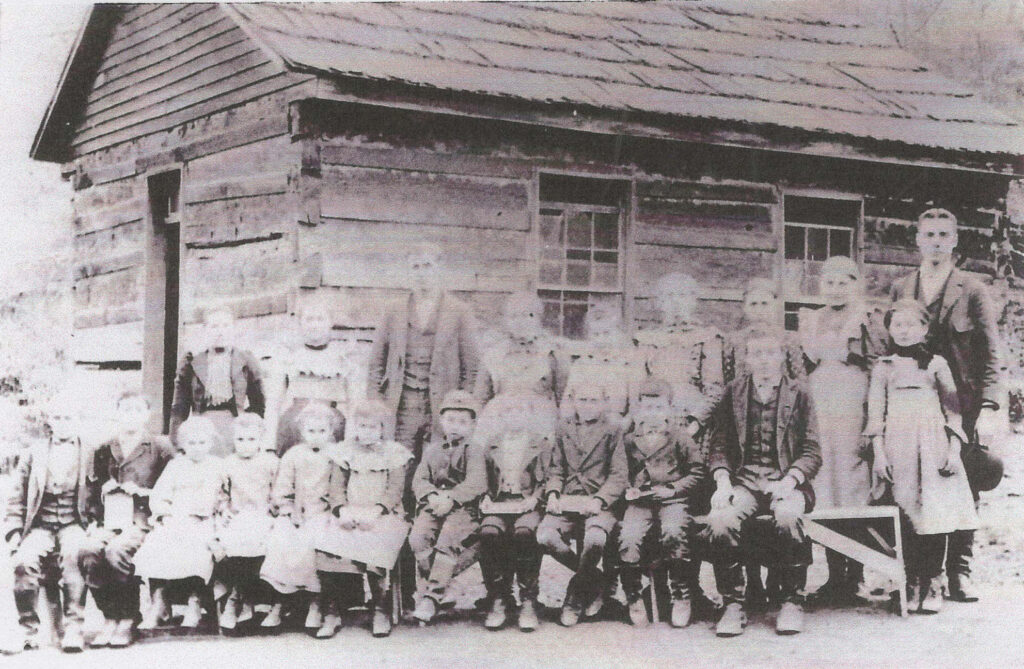
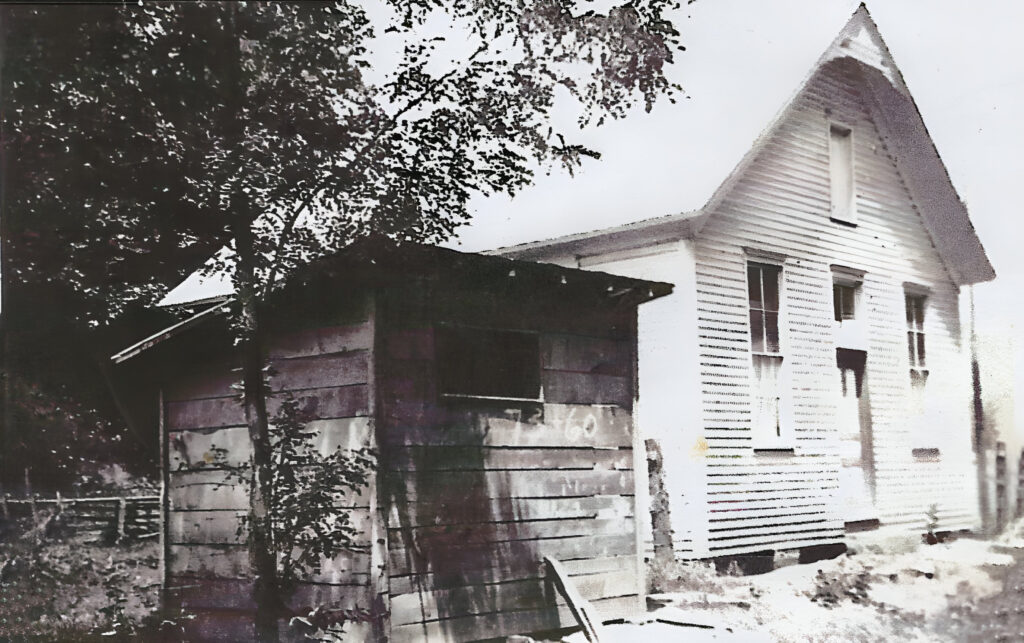
History of the Picture Postcard:
Before, Facebook, Instagram and Twitter, there were postcards. We could send a picture of where we had traveled. We could send a picture of ourselves. It was a fun way to keep up with friends and relatives. In many ways it helped track our family history. They even made scrapbooks out of the postcards. I have seen several of them through the years.
The history of the picture postcard is a fascinating topic that spans over two centuries and involves many countries and innovations. Here are some of the main events and milestones in the evolution of the postcard:
- The first known picture postcard was a hand-painted design on card created by the writer Theodore Hook in 1840. He posted the card to himself as a practical joke on the postal service, since the image was a caricature of workers in the post office.
- The first official postal cards were issued by the US government in 1873, following an act of Congress in 1872. These cards had a printed 1 cent stamp on the corner and were plain on the back, with only the address allowed.
- The first picture postcards that were used as souvenirs were sent from Vienna, Austria in 1871. These cards had images of various scenes and attractions on one side and a small space for a message on the other.
- The first picture postcards in the US were sold and popularized at the World Columbian Exposition in Chicago in 1893. These cards, known as viewcards, had images of the fair and its buildings on one side and a divided back for the address and message on the other.
- In 1898, Congress passed an act allowing private printing companies to produce postcards with the statement “Private Mailing Card, Authorized by Act of Congress of May 19, 1898.” These cards cost the same as government-issued cards (1 cent) and were the first to bear the term “postcard”.
- In 1901, the US Post Office allowed the use of the word “postcard” on cards issued by private publishers, and also permitted messages on the address side of the card, creating the divided back format that is still used today.
- In 1907, Kodak introduced the postcard camera, which could take a picture and print a postcard-size negative of the picture, complete with a divided back and space for postage. This enabled people to create their own “real photo” postcards from their personal snapshots.
- In the early 20th century, postcards became very popular as a form of communication and entertainment. Millions of postcards were produced and collected, featuring images of landscapes, monuments, celebrities, humor, art, and more. This period is known as the “Golden Age of Postcards” and lasted until the 1910s
- In the following decades, postcards continued to evolve with new printing techniques, materials, and designs. Some of the notable types of postcards include linen postcards, which had a textured surface and bright colors; chrome postcards, which had glossy photo-like images; and novelty postcards, which had unusual shapes, materials, or features.
- Today, postcards are still widely used and enjoyed by people around the world. They are a simple and fun way to share greetings, memories, and experiences with others. They are also a valuable source of historical and cultural information, as they capture the changing views and trends of different times and places.
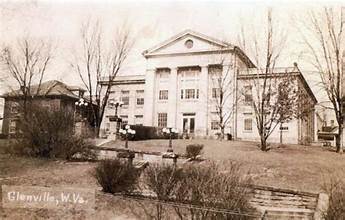
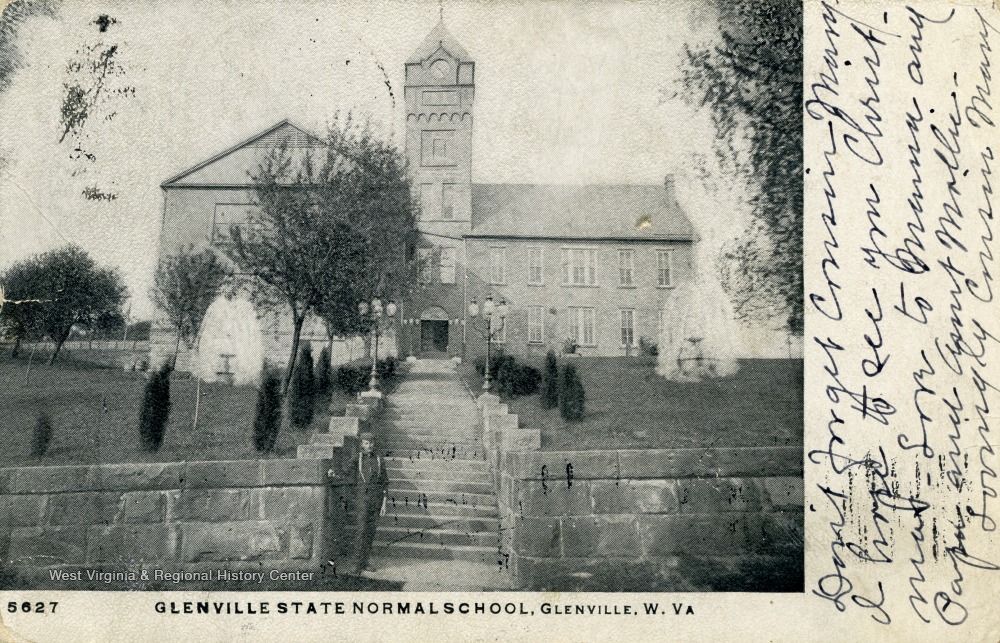
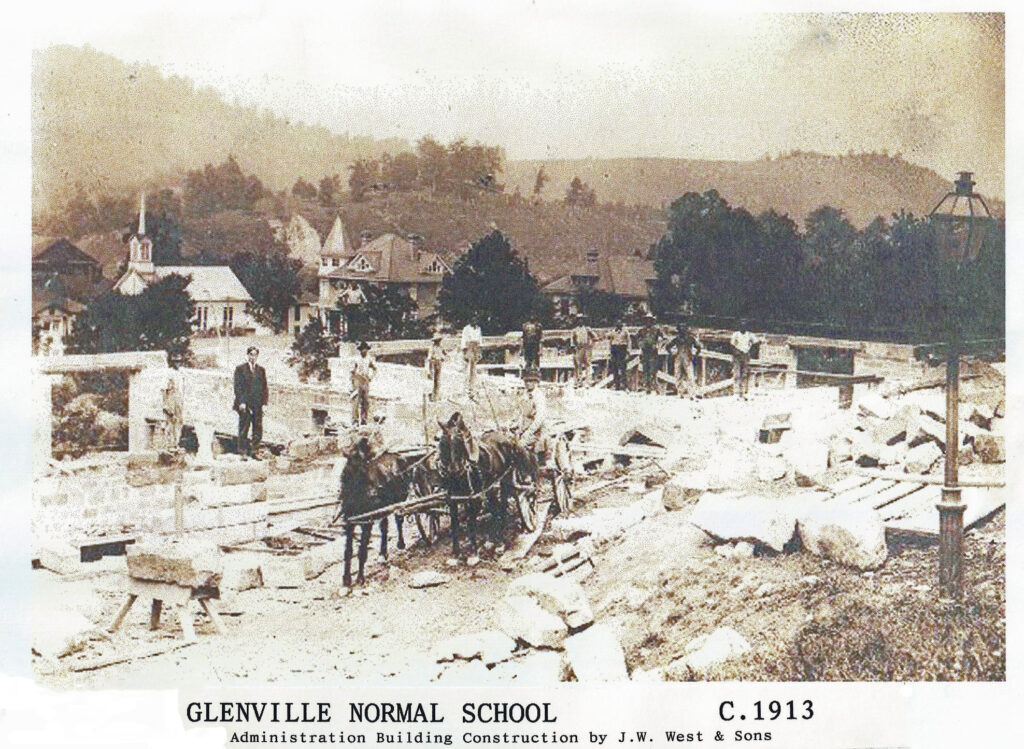
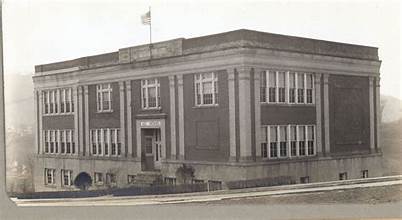
Gilmer County WV Schools
Taken from: https://westvirginia.hometownlocator.com
Name
Bailey School Glenville
Bear Run School Glenville
Bell School Tanner
Bird School Tanner
Bloody Run School Auburn
Buckhorn School Auburn
Cather School Glenville
Cherry Grove School Burnt House
Chestnutlick School Normantown
Conner School Gilmer
Cooper School Burnt House
Crooked Run School Tanner
Cub School Normantown
Dawson School Glenville
De Kalb School Tanner
Dry Run School Glenville
Duck Creek School Glenville
Ellis Run School Glenville
Fairview School Cedarville
Gluck Run School Glenville
Hall School Burnt House
Heaters Fork School Gilmer
Jerseywood School Gilmer
Job Run School Tanner
Joes Run School Gilmer
Laurel Fork School Tanner
Laurel Run School Cedarville
Leatherbark School Cedarville
Lick Fork School Normantown
Lick Run School Auburn
Little Cove School Vadis
Low Gap School Auburn
Low Gap School Gilmer
Lower Bull Run School Cedarville
Lower Newberne School Burnt House
Lower Rush Run School Auburn
Lynch Run School Glenville
Meadow View School Vadis
Middle Ellis School Gilmer
Mound Run School Burnt House
Mudlick School Normantown
Oak Grove School Normantown
Osborne School Auburn
Pawpaw School Auburn
Peachtree School Normantown
Pine Grove School Vadis
Poplarlick School Normantown
Revere School Grantsville
Rocky Fork School Gilmer
Rocky Pond School Auburn
Rudkin School Gilmer
Sand Fork School Gilmer
Shock School Cedarville
Slidinghill School Gilmer
Springston School Auburn
Spruce Run School Glenville
Spruce School Glenville
Steer Run School Cedarville
Stewart Creek School Glenville
Sugar Grove School Glenville
Sugar Grove School Vadis
Tanner Fork School Normantown
Third Run School Tanner
Tumbling Run School Gilmer
Turkey Fork School Glenville
Upper Big Run School Auburn
Upper Laurel School Burnt House
Upper Newberne School Burnt House
Walnut Grove School Tanner
Decoration Day
My Dad always referred to this day being called “Decoration Day”. He always made sure we took flowers to family members’ graves. Not all of these had been in the military. I decided to take a look at Decoration Day. Why did my father call it this?
The Civil War ended, on April 9, 1865. Just a few years later, on May 5, 1868, Major General John A. Logan, established Decoration Day. He headed an organization of Union veterans called the Grand Army of the Republic or the GAR. It was time for the nation to heal and show respect to all the fallen on both sides. To honor those that had lost their lives, it was time to decorate the graves. He declared it should be May 30. By the end of May many flowers would be blooming though out our county and be available for Americans to use.
The first Decoration Day observance was held that year, 1868, at Arlington National Cemetery, across the Potomac River from Washington, D.C. The veranda of Arlington mansion was draped for mourning. It was once the home and land of General Robert E. Lee. Many Washington officials, including General and Mrs. Ulysses S. Grant, presided over the ceremonies. After speeches, orphaned children from both soldiers and sailors in the Civil War and members of the GAR made their way through the cemetery, throwing flowers on both Union and Confederate graves. They sang hymns and reciting prayers, as they decorated the graves. I also believe it was a way for our whole county to come together and begin healing. Families had been torn apart with this war. Our country was hurting. Our president had been assassinated, just a few days after the war ended. Due to this war, West Virginia became a state in 1863.
Later Decoration Day expanded to include all Americans, men and women, who died while serving in the armed forces. Today it is known as Memorial Day, a federal holiday celebrated the last Monday in May. It is a time to honor those that gave the ultimate sacrifice. Freedom comes at a cost. We honor and thank, all those that paid that cost for us.

By Becky Kirkpatrick-Oppe
To Learn from the Past
“The dedication of a library is in itself an act of faith. To bring together the records of the past and to house them in buildings where they will be preserved for the use of men and women in the future, a Nation must believe in three things. It must believe in the past. It must believe in the future. It must, above all, believe in the capacity of its own people so to learn from the past that they can gain in judgment in creating their own future.”

Official Program for Dedication of the Franklin D. Roosevelt Presidential Library and Museum. June 30, 1941.
One of the projects of the WPA was to save records from all communities in the USA.
The Works Progress Administration (WPA; renamed in 1939 as the Work Projects Administration) was an American New Deal agency that employed millions of jobseekers (mostly men who were not formally educated) to carry out public works projects, including the construction of public buildings and roads.
FRANKLIN DELANO ROOSEVELT
By Becky Kirkpatrick-Oppe
In the Beginning: Gilmer County West Virginia
By: Becky Kirkpatrick-Oppe
The Little Kanawha Valley was first visited by Europeans; William Lowther, Jesse and Ellis Hughes in 1772, when they passed through our area. Toward the end of the Revolutionary War, Adam O’Brien and his son-in-law Peter McCune came through scoping out the valley. Peter must have liked what he saw here. He came back in 1810 and settled at the mouth of Leading Creek. The military would many times, give out land grants to those that served. William Stalnaker was a lieutenant in the War of 1812. For his service he was given 30,000 acres of land in Lewis County, one of Gilmer’s parent counties. He found a deserted indigenous people’s village. There he put down stakes and claimed his land near Mill Seat Run, on the banks of the Little Kanawha River. These were the first few to call what is now Gilmer County, home.
The Stalnaker family, William, Elizabeth and their son Salathiel, moved in. They had a group of twenty slaves, brought in to clear the land and build a tobacco plantation. In 1820 they built a two story, brick home on the banks of the Little Kanawha River. In the following years a second home was built with homemade bricks. It would go on to serve as the first Gilmer County Court House, when we became a county.
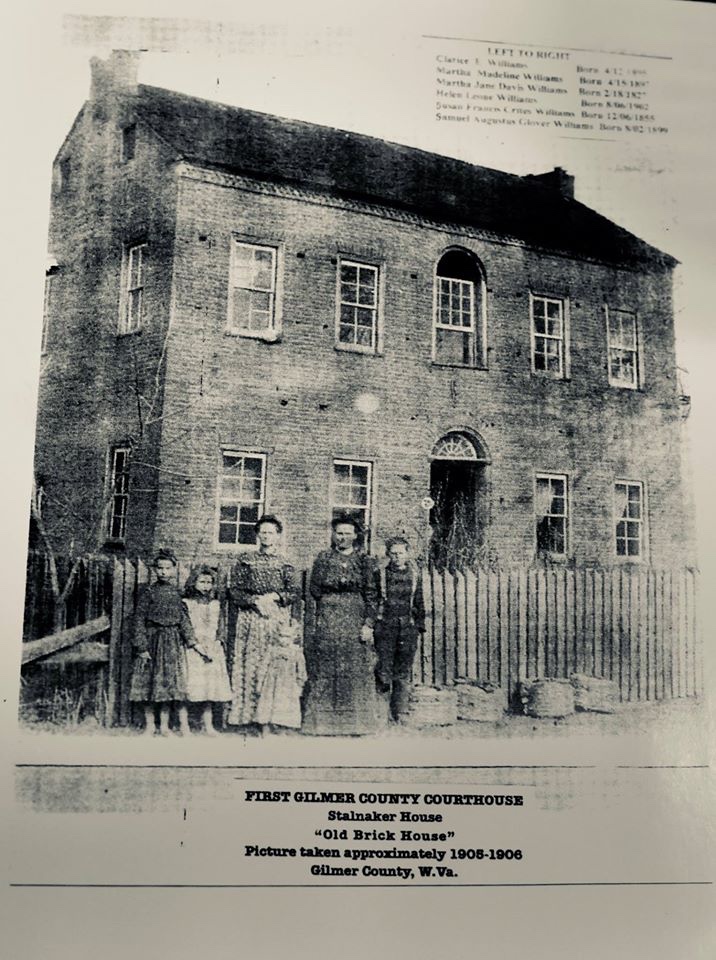
Taken From: “Inventory of a county archives of West Virginia, # 11, Gilmer County (Glenville)”
Roaming the Back Roads
by Genny Kirkpatrick, written for the Retired Gilmer County School Employees’ News Letter
Trace Fork School Gilmer County WV One Room Schools

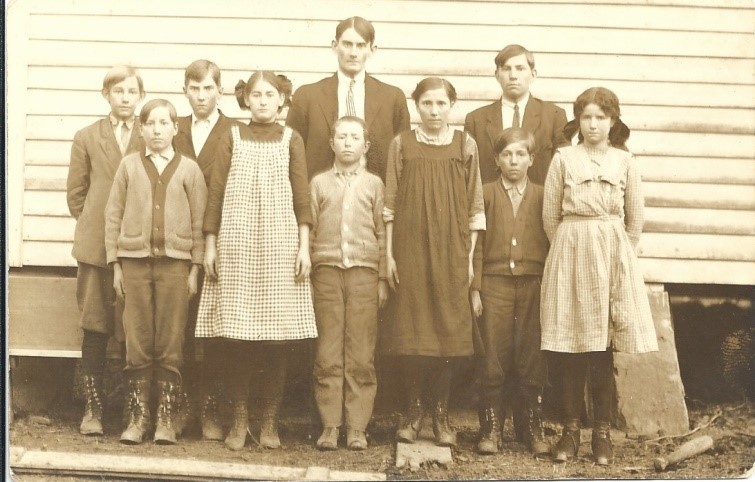

Trace Fork School was first held in an old round log building about one-half mile from the mouth of Trace Fork where L.H. “Dode” Lydick later lived. Teachers were James Taylor (1867) and Joe Calenine (1868). In 1869 a new building was erected about a mile from the mouth of Trace Fork on the road bank about one hundred yards above the old Gainer home. Four terms were taught before the building burned in the spring of 1873. Lyda Hays was the last teacher in this building. The following year (1873) school was again held one-half mile above the mouth of Trace at the L.H. Lydick home with North Orvis as teacher. In 1874 school was taught in the log U.B. Church on land back of the Revere Store and Post Office. Henry C. Goodnight was the teacher. There was no school in the Lower Trace section from 1875 until 1880.
The Upper Trace School then came into existence. People from the mouth of Trace to the mouth of Tanner realized the need for a school near enough for their children to attend. A.E. and Benton Webster donated land upon which to build a new schoolhouse. Jim Cain was given a contract to build a frame building for a school. It was located on the right bank of Tanner Fork and was known as the Webster School (but it was commonly known as the “White School” because of its color). School was held here for 22 terms. Teachers were Alice Hays (1880), Benjamin Franklin (1881), Mr. Hanson (1882), Jake Weaver (1883), Dave Weaver (1884), W.L. Stump (1885), Elmer Steward (1886), Ida Brannon (1887-88), Asa B. Harris (1889, 1893), Rev. Albert Kelley (1890), Florence Stalnaker (1891), Coleman Gainer (1892), Zoe Stalnaker (1894), Allen Houton (1895), Ida Bell (1896), Jacob Loudin (1897), Jennie Stalnaker (1899), Mae Bell (1900), and Ethel Bush (1901).
On July 1, 1901 the DeKalb District BOE (Jacob Crites, D.H. Beall, and A.H. Cooper) , met and ordered that the Webster School (Upper Trace Fork) be moved to the mouth of Trace Fork and a new school be established at Latonia. Land for the school was now donated by Quincy Kelley on the left bank of Trace Fork on the right side of the road about 200 yards from Tanner Creek. W.R. Church was hired to build the new building. Teachers were: I.N. Hardman (1902), Alva Wilt (1903), J.A. Kelly (1904-05), Jesse Bell, Sr. ((1906), Vear Ponager (1907), Blaine Engle (1908-10), Nellie Harris (1911), Charles Ayers (1912-14), Judson Gainer (1915). School was discontinued because of an insufficient number of pupils until 1931. Then school opened again with the following teachers: Jesse Bell, Jr.,(1931), Clara Riddle (1932), Holly Gainer (1933), Thelma Ware 1934), Willard Britton (1935), Woodroe Beall (1936-38), Charles Boone Maxwell (1938), Thelma Gainer (1939). This school closed in May 1940.
Floods in Gilmer County WV
Floods, have had a huge impact on Gilmer County through the years. We have had several nasty ones in my lifetime. As a child, it was always a big deal to drive to Glenville to see the water coming up under the stoplight. Jon boats would be moving through the streets helping people out. My Dad would have the three of us kids stand in the edge of the water, for a picture. The addition of the Burnsville Dam, completed in September of 1976, helped control some of the water. Brooklyn, in Glenville, seems to always be hit hard. Through it all, the good people, of our county came together to help one another. Our Glenville Democrat-Pathfinder has been with us all along, keeping us updated. The Recreation Center has been a spot to give food out and help our county. Glenville State was always there to lend a helping hand, giving folks a place to stay and place to eat. They, many times, have been a shelter in the storm.
25 Feet is Flood Stage in Glenville
| Dates of Floods in Glenville, WV | Crested at: |
| February 9, 1994 | 30.4 |
| July 25,1989 | 29.5 |
| November 1985 | 36.5 |
| December 1978 | 29.8 |
| December 1969 | 28.1 |
| March 1967 | 34.5 |
| February 1957 | 30.2 |
| December 1956 | 29.2 |
| February 1957 | 30.2 |
| December 1956 | 29.2 |
| February 1951 | 31.2 |
| June 1950 | 31.1 |
| August 1943 | 30.7 |
| April 1939 | 33.2 |
| February 1939 | 29.8 |
| November 1926 | 33.6 |
| March 1918 | 31.7 |
Our outlying communities have felt the pain of these floods. Countless people have lost homes. Lives have also been lost. Businesses have been devastated. Our people come through. They rebuild, push through and start life again, with the help of our friends and neighbors. When we work together, we are our best selves.
Tell us your stories. You are a part of our living history. We would love to hear the stories of your family. You can email us at [email protected] or message us on Facebook https://www.facebook.com/GilmerCoWVHistoricalSociety .

March 23,2023
West Virginia Humanities Council
If you’re going to be in Glenville on Thursday (March 23), you’ll have two opportunities to catch History Alive! performances. JoAnn Peterson will be taking on dual roles. At 1 p.m., she will appear as First Lady Abigail Adams at the Gilmer County WV Historical Society at 302 East Main Street (304-462-5065). At 5 p.m., she will portray journalist Nellie Bly at the Robert F. Kidd Library at 100 High Street (304-462-6163).


Help us Pay for New Roof
Used Heavy Gauge Metal Roofing & Metal Rain Gutters Taken off the Annex Building Gilmer County Historical Society
Silent Auction
Used Heavy Gauge Metal Roofing & Metal Rain Gutters

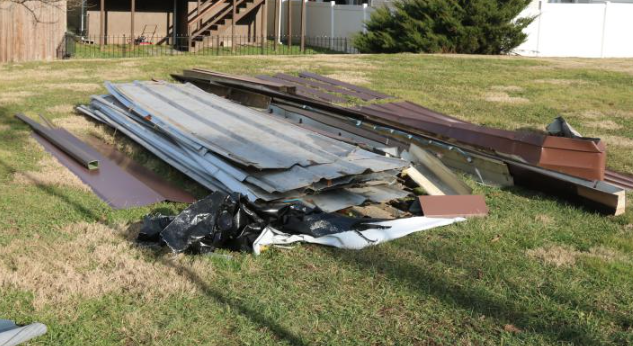
Taken off the Annex Building
Gilmer County Historical Society
302 S. Main St
Po Box 235
Glenville, WV 26351
ask for ‘Sandy’
304-462-8390
Mail your bid to the address above or drop off on a Wednesday or Saturday, between 11 and 3.
All bids must be written on paper and sealed in an envelope marked ‘Roofing Metal, Silent Auction Jan. 2023’. Your submission must include the amount of your bid, name, address, phone number, email address and signature.
All bids are non refundable and final.
Winning bidder is responsible for any applicable sales tax. If tax exempt, you will need to provide us with a WV Tax Exemption Certificate at the time of payment.
Sold as-is and subject to purchasers sole discretion of value and condition. Located on site for inspection. Ask any questions before bidding.
The winning bidder will be announced on Wednesday, February 8, 2023 at 2:00pm. in the Gilmer County Historical Society Annex building. The winner will be contacted by phone/text/email if not present.
Full cash payment is required before removal. All metal must be removed no later than Saturday, February 11th by 12:00 noon or you forfeit the winning bid and the next highest bidder will be notified as the winner.
We are not responsible for the protection or condition of the metal after the announcement of the winning bidder.
The seller is not liable for any damage or injury to any property or persons in relation to the material or its sale.
Any damage to the property while removing the metal is the sole responsibility of the winning bidder.
We reserve the right to cancel the auction at any time.
All proceeds will benefit the Gilmer County Historical Society.
Jan. 2023 Mini News Letter
by Sandy Hershey, Board Member
2023 January Mini Newsletter


The Reaser family from Gilmer County, West Virginia. I live on Sinking Creek Road today. Have been neighbors to them for 32 years now. A number of their photos have come up missing while under possession outside the family. They’ve been asking for any photos anyone may have of their relatives so they can identified their relatives by older members of the family who are still able do this. If you think you may have any in your possession, please contact us. Thank you. Sandy
We had our monthly meeting on the 18th and our customary 8 member turn out. Our new membership total isn’t official yet for 2023 but looks promising at 90+ members. An increase of approximately 50 paying members, some new and some returning. We also had two guests in the Annex with us, one doing research in the library on genealogy and the other setting up our new digitizing computer. I’m so excited about getting our photos in order. It will be a huge job for sure.
Our treasurer’s report has proven hard work produces progress. A gracious Thank You is in order for numerous donations given this past year from anonymous donors, local residents and businesses which totaled approximately $19,000 for operational costs and special events like Folk Festival, cleaning and organizing the Holt House Museum, Pumpkin Roll Fund Drive, leasing of our Annex Library for private groups, the Farm Bureau and the Gilmer County Fire Department (they sponsored a wonderful Gingerbread House building contest), and a History lesson for the very young and their parents while enjoying a breakfast with Santa! (thank you Martin Hess). The American Rescue Plan Act (ARPA) awarded us $20,000 through our very own Gilmer County Commissioners, for a roof replacement and water damage. Also an additional $14,000 from the Town Council for an AC/Heating unit in our Annex Library meeting hall. Wow, that’s one impressive paragraph! All this has made a large impact on our group and our community. Though this was an exceptional year, I hope we will keep improving in 2023 for the benefit of us all.
The rest of the meeting was filled with electing our new President, Peggy Wentzell and new board member, Sandy Hershey. Wonder what we’ll fill our calendar with this year? To be seen.
Here’s where I invite everyone to try to attend a meeting or two in 2023. If the time of day for meetings is a problem for you, start by letting us know. We’ll be willing to make changes to the time if enough people show us what our members’ needs are. And for the new members who came in to help during events and share fresh ideas, we all benefited. Just 4 hrs a year of everyone’s time can make a huge difference to those who carry the load for all. Please think about it. We’ll try to post this years activities early enough so you may pick the ones that best suit your interests.
Steve Ostaff, Board Member sent some photos and bits of information he’d like to share with everyone:

Winter is for weaving, my Studio loom was made by Newcomb in Iowa during 1930s. The wool yarn is made from wool I sheared off my sheep and sent to a mill to be carded and spun. The three colors are natural off white undyed from the sheep, black from a black sheep, and another breed that had both colors which I then had mixed to make grey. My goal is to make one blanket per winter. A full size blanket is two identical three foot wide blankets, that I hand sew together to make one. The lengths vary.

Woven wool blanket made by past member ????? who donated it to the GCHSociety. Steve Ostaff, president at the time, accepting the gift.
During our November 2022 Annual Meeting, we had Rick Sypolt as a guest speaker on the English Chestnut trees and the history of their decline in West Virginia. He was a fascinating speaker on the subject of how we are helping our state to repopulate the trees through hard work and research. There has been an increase in areas of West Virginia where propagation has made in an impact on the increasing acreage of this majestic tree. Steve shared a picture of an antique 1902 chest of drawers made from the English Chestnut to show the sturdiness and beauty of the wood grain. Thanks Steve.

Happy New Year to All
Winter set in fast and hard this past week. Christmas is behind us and New Years is within reach. Because of the strong winds and snow we moved most of our outdoor Christmas decorations inside by the warm fireplace mantels. Large wrapped packages strewn all about. Looks festive and colorful when you gaze past them through the wavy glass windows and onto the yard. The ground is white. So what better time to pay homage to the old fashioned snowman. With scarf and mittens, he’s loved by the young and the young-at-heart. We’ll have two or three more months to contend with the white stuff. Some love it and some grumble, but few miss the beauty of fresh fallen snow.
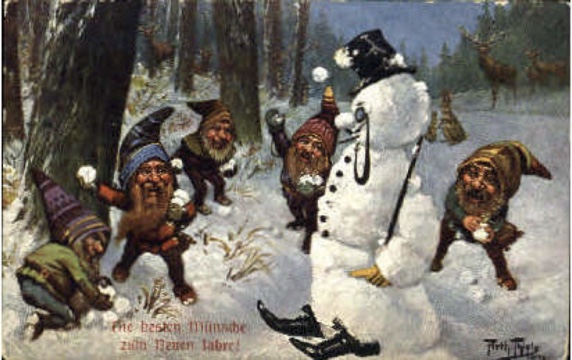
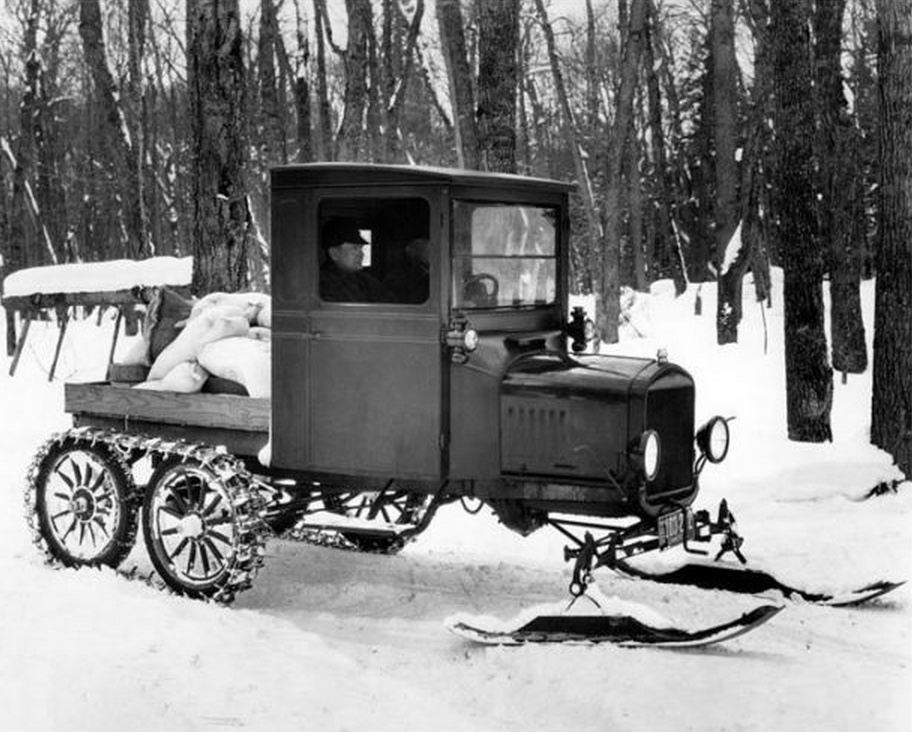
Here is a link to a newspaper article recently printed on how West Virginia played a part in the creation of the song ‘Frosty The Snowman’.
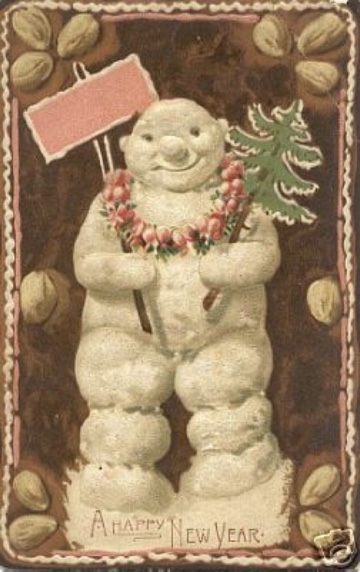
All of us at the Gilmer County Historical Society would like to wish everyone a Happy and Healthy New Year for 2023.
“If history were taught in the form of stories, it would never be forgotten.”
RUDYARD KIPLING
Breakfast With Santa At the Historical Society
Students from Kindergarten through second grade of the Gilmer County Elementary School in Glenville, West Virginia, were invited to Breakfast with Santa on December 17th by the Gilmer County Historical Society. The children enjoyed chatting with Santa and learning about Christmas toys from the past like wooden boats powered by rubber bands and wooden tops you can spin on a smooth surface. Showing the kids how his clothing fashions changed over the past hundred years, Santa even pointed out one of his favorite long, fur trimmed robes.
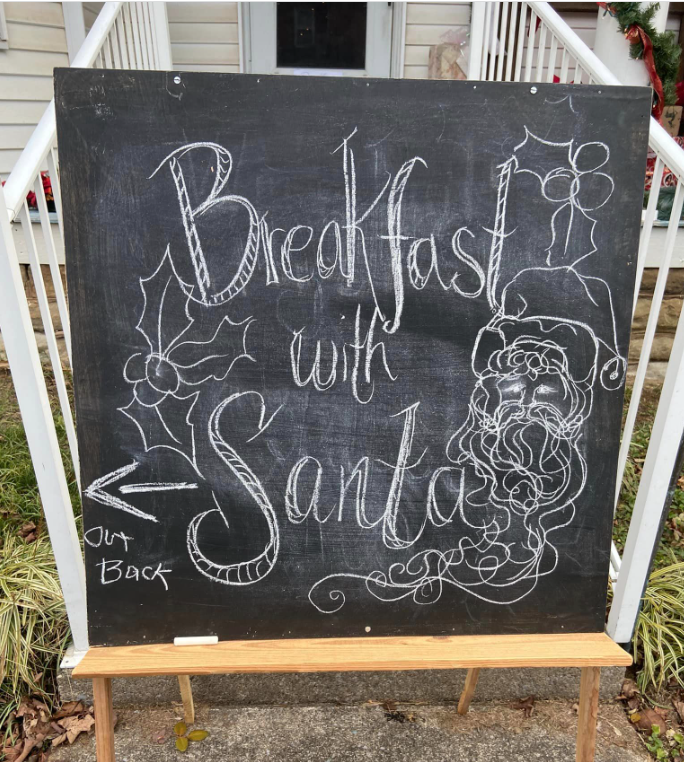



Watching the young children converse with the man in red as they ate and played with the old fashioned toys and gifts from Santa was heartwarming to see. There is nothing sweeter than shy smiles of wonder on children’s faces this time of year.




One of the favorite spots was the water table. Who needs batteries?


As Santa and his helpers handed out gifts, Moms and Dads took pictures of all the interesting activities.







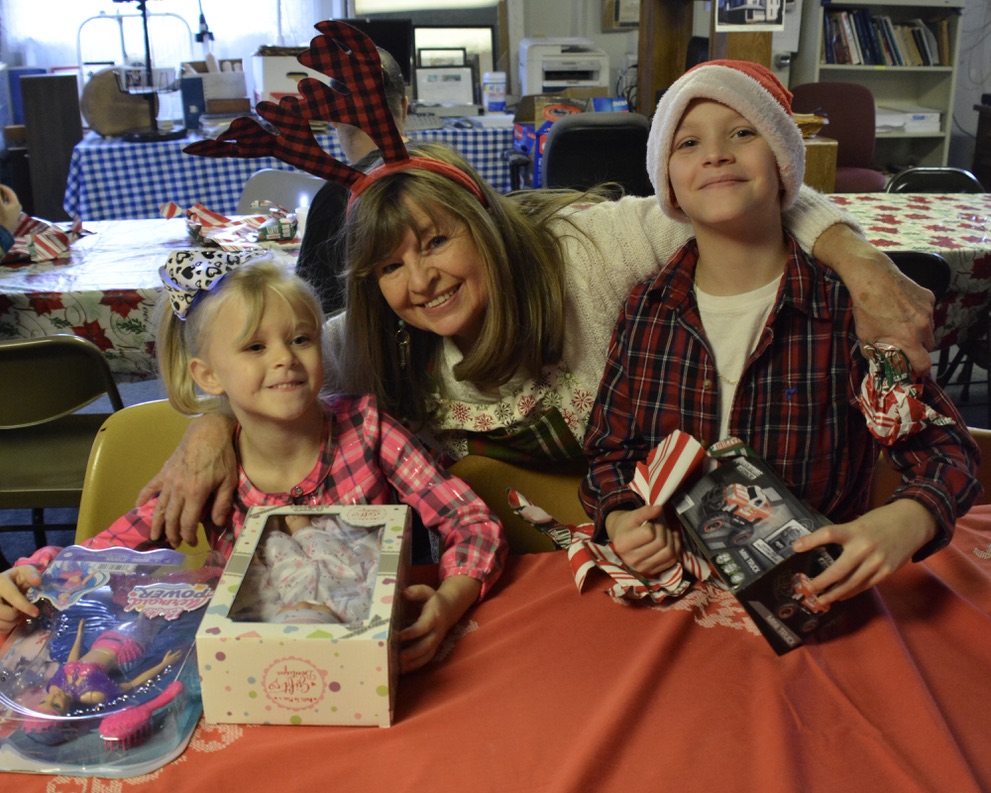















After the two hour visit with Santa, everyone said their goodbyes and Merry Christmas wishes were exchanged. Lots of smiles and hugs for everyone.
The Historical Society sent home A Brief History Of Toys from 4000 bc to 1993.
As we tidy up the kitchen and turn the Annex back into our history library, we know we have done our part in creating a spark in the hearts of our younger generation. May it grow into the desire to become the future protectors of our past.

We would like to thank our local businesses and private individuals who donated to help make this event possible. The spirit of Christmas is strong in Gilmer County, West Virginia.
Christmas in the Park
Today was a fun day at the Historical Society. The Gilmer County Fire Department had an overcast day but that didn’t dampen the Gingerbread House building competition. Nor the Storefront Christmas Decorating Contest.
First we had to judge the Gingerbread Houses. Not an easy task for the untrained eye. The entries where all well made and unique. The winner was a young man by the name of Lucas.

What really topped of the day for us was winning a plaque for the best Store Front Decoration. Yay!
Here are a few highlights from the day.


Zoey, Alissa and May 
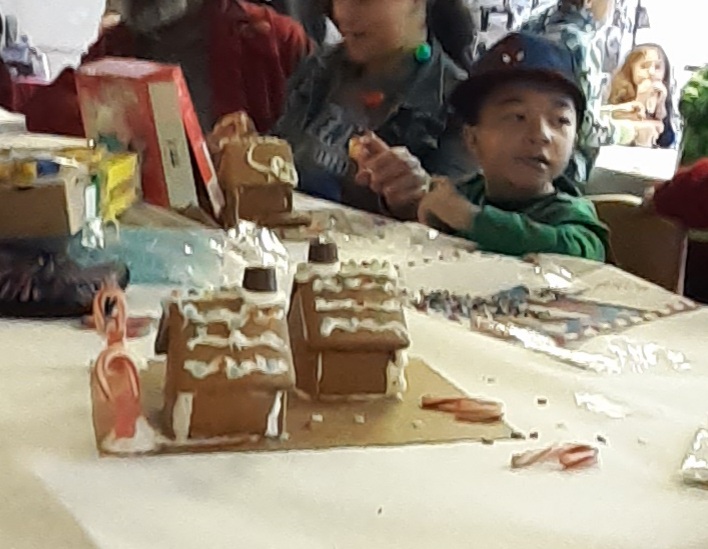
John, his Mother and Grandfather 


One happy John 
Candy 
Even the adults pitched in 
The building has begun! 
One of the Judges, Peggy Wentzell
We’re all looking forward to next year!

